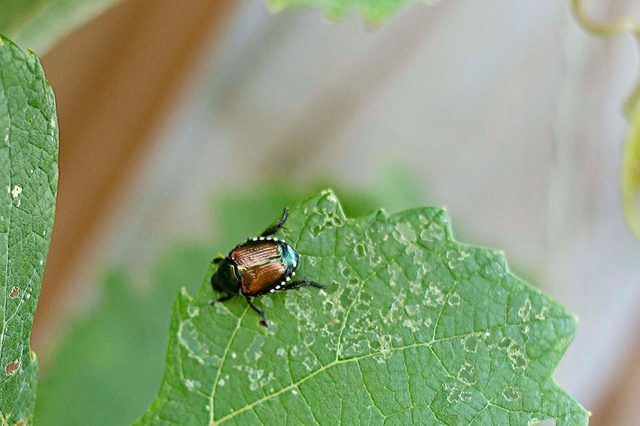Bulbs
Flower Basics
Flower Beds & Specialty Gardens
Flower Garden
Garden Furniture
Garden Gnomes
Garden Seeds
Garden Sheds
Garden Statues
Garden Tools & Supplies
Gardening Basics
Green & Organic
Groundcovers & Vines
Growing Annuals
Growing Basil
Growing Beans
Growing Berries
Growing Blueberries
Growing Cactus
Growing Corn
Growing Cotton
Growing Edibles
Growing Flowers
Growing Garlic
Growing Grapes
Growing Grass
Growing Herbs
Growing Jasmine
Growing Mint
Growing Mushrooms
Orchids
Growing Peanuts
Growing Perennials
Growing Plants
Growing Rosemary
Growing Roses
Growing Strawberries
Growing Sunflowers
Growing Thyme
Growing Tomatoes
Growing Tulips
Growing Vegetables
Herb Basics
Herb Garden
Indoor Growing
Landscaping Basics
Landscaping Patios
Landscaping Plants
Landscaping Shrubs
Landscaping Trees
Landscaping Walks & Pathways
Lawn Basics
Lawn Maintenance
Lawn Mowers
Lawn Ornaments
Lawn Planting
Lawn Tools
Outdoor Growing
Overall Landscape Planning
Pests, Weeds & Problems
Plant Basics
Rock Garden
Rose Garden
Shrubs
Soil
Specialty Gardens
Trees
Vegetable Garden
Yard Maintenance
How to Care for Peonies After Blooming
How to Care for Peonies After Blooming. Peonies (Paeonia spp.) are grown for their showy flowers, and proper care after they bloom each year encourages nice flowers for the next year. The common garden peony (Paeonia lactiflora), which is hardy in U.S. Department of Agriculture plant hardiness zones 3 through 8, blooms in late spring or early...
Peonies (Paeonia spp.) are grown for their showy flowers, and proper care after they bloom each year encourages nice flowers for the next year. The common garden peony (Paeonia lactiflora), which is hardy in U.S. Department of Agriculture plant hardiness zones 3 through 8, blooms in late spring or early summer. Tree peony (Paeonia suffruticosa) blooms in mid- to late spring and is hardy in USDA zones 5 through 9.
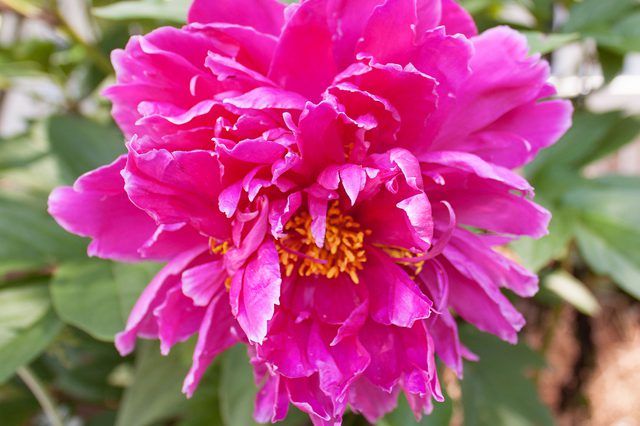
Both garden peonies and tree peonies should be deadheaded after flowering to keep the plants from wasting energy producing seeds. Deadheading is the removal of old, spent flowers. Cut each flower stem back just far enough to keep the bush looking neat rather than straggly. After a heavy frost in fall, garden peonies should be cut back to about 3 inches above the soil surface. Do not cut back tree peonies. As a precaution against spreading diseases among plants, disinfect pruning tools between uses by soaking them for five minutes in a solution that is one part bleach and three parts water. Then rinse the tools in clean water, and allow them to air-dry.
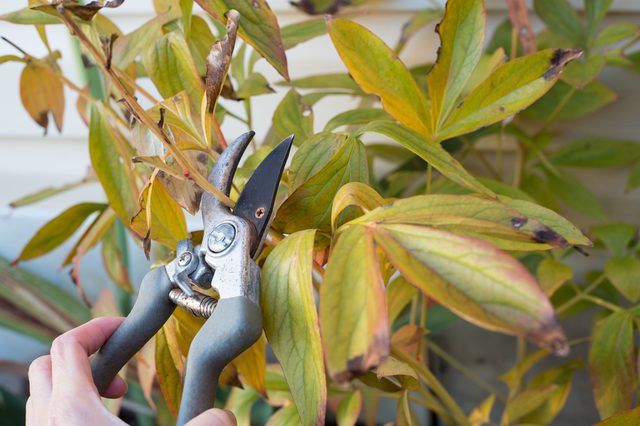
The recommended time to fertilize peonies is in spring, before they flower. If they were not fertilized in spring, however, peonies can be fertilized after they bloom. Apply a dry garden fertilizer with a nitrogen-phosphorus-potassium ratio of 5-10-10 at the rate of 2 to 4 pounds per 100 square feet, sprinkling it on the soil surface. If the peonies were fertilized in spring, then after they finish blooming a supplemental fertilizer that contains only phosphorus, with an N-P-K ratio of 0-10-0, can be applied.
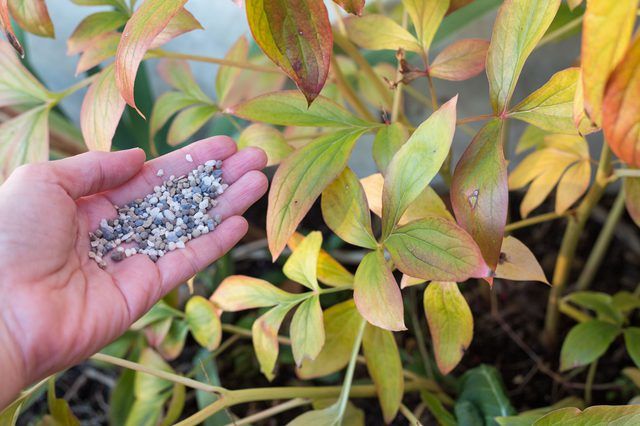
Peonies grow best in moist, well-drained soil that doesn't stay soggy. New peonies that were planted in spring require watering a few times each week when no rain keeps their soil moist. If established peonies start to wilt, water their soil deeply and infrequently. This watering schedule should continue after blooming until the peonies start to go dormant in late fall. Mulch used on the soil surface to retain soil moisture and prevent weeds must not touch peony stems in order to help deter fungus and blights in the peonies.
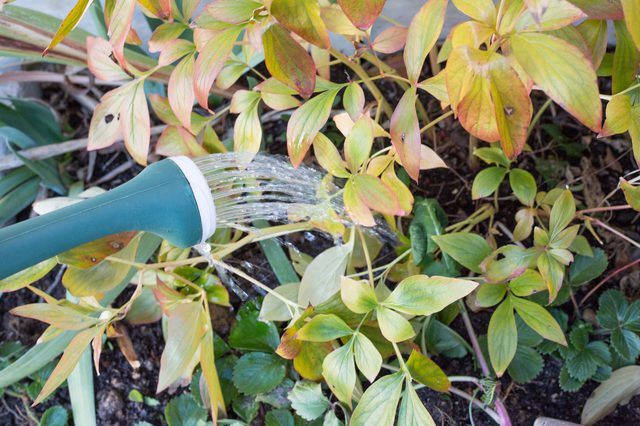
Insects such as ants and Japanese beetles may eat peonies, but they rarely result in lasting damage to the plants. Disease is a more serious potential problem. Botrytis blight (Botrytis cinerea) and Phytophthora blight (Phytophthora cactorum) attack flower buds, stems and leaves. Botrytis blight is marked by fuzzy fungal growth, and Phytophthora blight makes leaves turn leathery. Fungicides are rarely effective against these blights, but removing and discarding affected foliage is a control technique. In severe cases, entire plants may be destroyed. Well-drained soil and proper pruning help prevent these blights and other less severe fungal infections, such as leaf and stem spots. Leaf and stem spots result in twisted, reddish stems and red spots on leaves, and it is controlled by removing and destroying the affected plant parts.
